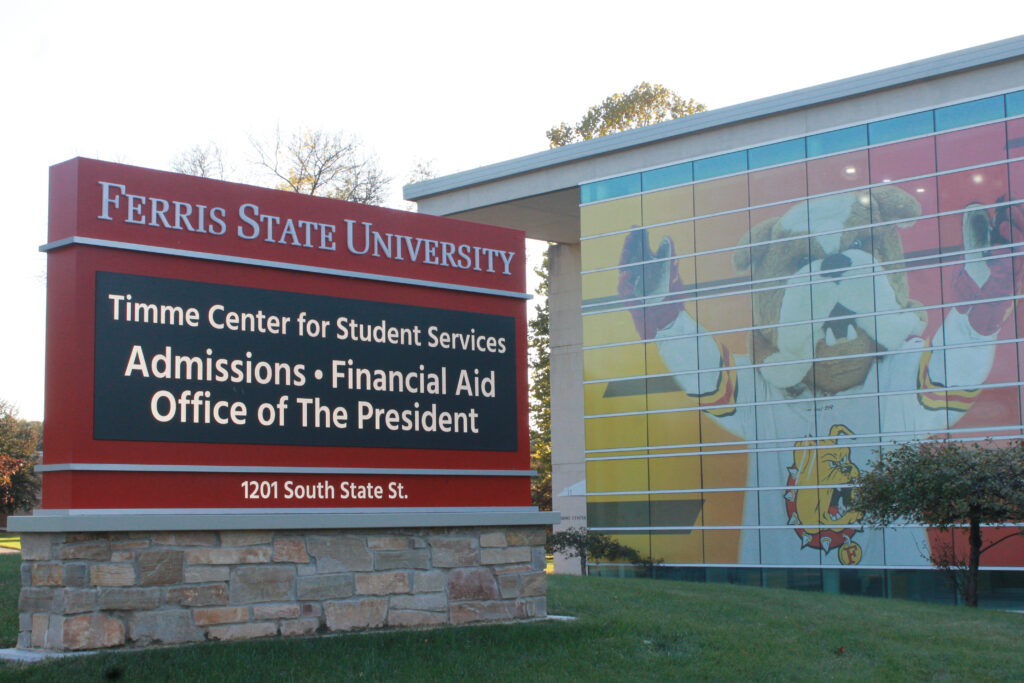The Department of Education is undergoing trial runs to fix previous FAFSA problems and to test out some new changes for the upcoming 2025-2026 FAFSA.
The Beta Testing Program is a tool the Department of Education uses as a safeguard to ensure that the technology is working correctly for 2025-26. As students’ problems continue while filling out the FAFSA, the department conducts a series of test phases to address and fix the issues.
Assistant Director of Financial Aid Melanie Mulder described the problems the previous 2024-2025 FAFSA had.

“FAFSA issues prior to the 2024-25 FAFSA were minimal and usually involved students or parents that answered questions incorrectly,” Mulder said. “There were numerous technical issues surrounding the new FAFSA format. For example, some students were not able to invite their parents to submit their information for the FAFSA, even though it was required for them to do so. Additionally, some parents were not able to complete their portion of the FAFSA due to technical issues. “
Despite having the number of questions reduced from 100 to 36, the main issues were not so much with the students filling out their half but sharing it with their parents so they could fill out their side. Many students have faced technical difficulties when filling out the FAFSA.
Information security intelligence freshman Cayla Barber talked about the problems she had with the 2024-2025 FAFSA.
“I thought it was frustrating because it kept logging me out,” Barber said. “And it didn’t really load my progress and when you finally get through the process it did absolutely nothing frustrating.”
The Department of Education has solutions, including resources in the 2025-2026 FAFSA, such as a Revised Student Aid estimator, a stand-alone “parent wizard” contributor tool to help students and families and an updated 2025-2026 FAFSA prototype. Mulder further explained the importance of these resources and their purpose.
“Because of the delays and technical issues associated with the 2024-25 FAFSA release, the Department of Education did not have time to implement any additional resources for families. These tools serve as training materials to help prepare students and their parents to file the FAFSA by helping them know what to expect once the FAFSA is released on December 1,” Mulder said. “The Student Aid Estimator will help first-time filers by providing an estimate of the type of amount of financial assistance each student can expect to receive from Federal Student Aid – whether it be in the form of Pell Grant and/or federal student loans.”
Each testing phase of the FAFSA is labeled betas one, two, three and four. These tests will help the Department of Education fix any problems with the FAFSA and improve the material to make navigating the FAFSA easier. Beta testing is conducted all over the U.S. and likely recruits students from different areas to test-run FAFSAs so the Department of Education can get the feedback it needs.
Mulder described how the testing works. She explained how approximately 1000 students will be involved in each of the four scheduled testing periods.
“Agencies that have volunteered for the beta testing project will assist students in filing their FAFSA for 2025-26,” Mulder said. “After each test group of students files the FAFSA, Federal Student Aid will review the results and attempt to resolve any technical issues that may prevent students from filing their FAFSA, or may prevent the test schools from receiving the electronic downloads of student FAFSAs.”
The beta testing began on Oct. 1. As of now, Beta one is coming to a close, and the other three beta tests will roll out in mid-October, early November, and mid-November. The Federal Student Aid program has not released further details regarding the testing stages.
Plastics engineering freshman Noah Bros commented on his time filling out the 2024-2025 FAFSA.
“I thought it was pretty easy, you just got to read the directions it gives you,” Bros said. “There’s just a lot of information, I had to track down about myself and about my my family. Otherwise, like I had some help from my family, so that was good.”
Students can take as much time as they need while filling out the FAFSA. While in some cases, like Bros, who had an easier experience as far as the step-by-step directions, other students have faced technical difficulties. One thing to take note of is that each student has their own experience when filling out the FAFSA.”
“The FAFSA is the tool for students that need financial assistance to cover their educational expenses,” Mulder said. ”We encourage every eligible student that needs financial assistance to complete the FAFSA in order to receive all of the financial aid that they are eligible for.”
